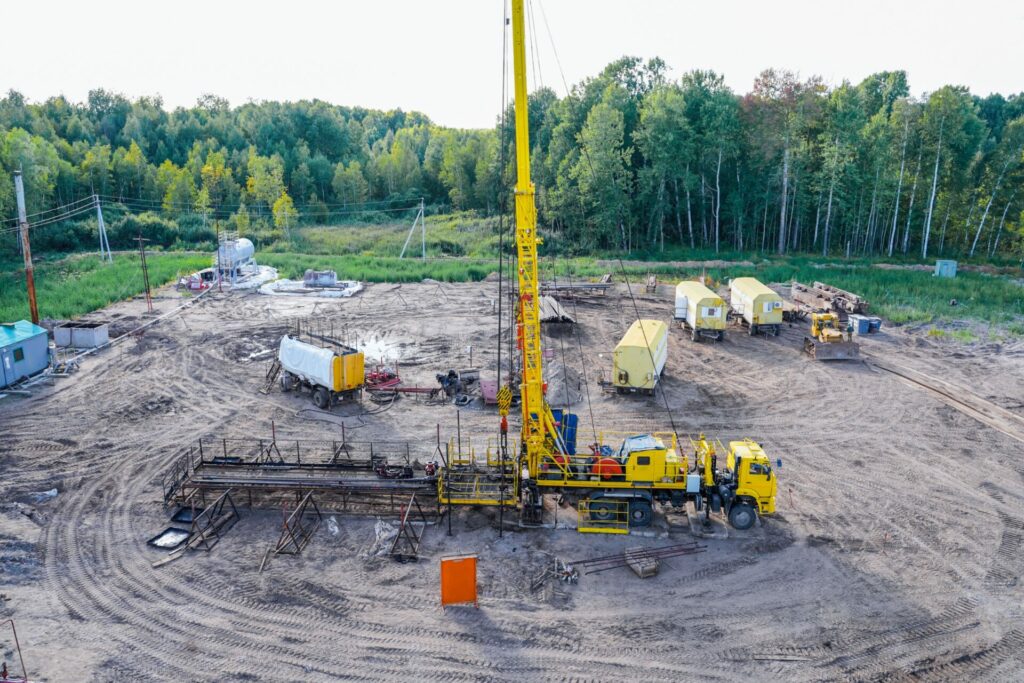
At first blush, a title search for oil and gas opportunities might appear similar to any other title search. There is a critical difference between oil and gas title searches. In this case, you have to go back much further and include two other distinct attributes. The ownership of the subsurface minerals and the mineral leasehold must be understood to calculate the cost to drill. Today, a compelling case can be made to digitalize land lease management when operating in the Oil & Gas industry.
The Origin of Oil & Gas Title Searches
Just before the Civil War in the United States, Edwin Drake made history in Pennsylvania. It is here that he drilled the first commercially feasible oil well in 1859. “Drake’s well” is now the starting point for all title searches of oil and gas ownership (source). This historic site is touted as the birthplace of the world’s modern petroleum industry (source).
Before Edwin Drake pioneered a new industry, it was never thought that any value existed under the surface of a land parcel. All the value was seen regarding what income could be derived from above-ground land use.
For the next 100 years, oil wells were drilled vertically from the pad site down. In the mid-1980s, however, new advances in technology unlocked the viability of drilling horizontally. This option provided access to new oil field opportunities. It was also more efficient and less expensive than multiple vertical wells (source). Further, the cement used around steel casings allowed for deeper wells. This variant enabled even greater access to natural gas trapped in shale formations, creating more opportunities.
The Complexity of Oil & Gas Title Searches
These developments created the potential for new challenges with a title search. Now that it was possible to drill horizontally from an adjacent site and tap into a wealth of reserves, careful research was needed to account for potentially illegal extraction.
Another issue emerged. Traditional title searches for surface rights often extended back a shorter period and were more straightforward. These searches could go back as far as needed to identify the root deed and review each subsequent transfer thereafter. This type of title search would typically go back 30-50 years.
Title search that includes oil and mineral rights, however, should really go back to 1859. This type of search might not be practical or possible. Written, paper-based records may have referenced below-surface rights a long time ago but were then neglected in later title descriptions. If anything of value is discovered thereafter, sometimes a surprise could occur whereby a right to a royalty could emerge unexpectedly.
It is for these reasons that a compelling case can be argued to digitalize land lease management. Digital records can be scanned and searched with far greater accuracy and efficiency.
3 Reasons to Digitalize Land Lease Management
- Ability to respond faster to change – the speed of change has accelerated in nearly every industry today. Oil prices fluctuate with considerable frequency. The price of a Brent barrel of oil was about $20 in April 2020 – that same barrel cost $123 in May 2022. With this much variability, it is increasingly critical to deploy digital systems to respond quickly as pricing conditions evolve to optimize site profitability.
- Better visibility to plan resource allocation – profitability by oil well vary as the price of a barrel of oil changes. Some wells may simply be best left idle until minimum price levels are achieved. But there is another factor to optimizing the cost of all production operations. Capital equipment, labor resources, and project supervision are scarce resources. These cannot be moved back and forth between distributed oil wells on an hour-by-hour or day-by-day basis. Minimum time commitments further complicate the optimization of all oil & gas resources, including the underlying land leases and search process to acquire new land parcels. Highly complex equipment allocation modeling can be implemented to greatly improve profitability as well as employee experience to enable the highest potential overall production performance.
- Collection of more data – as has repeatedly been suggested, the value of operational data continues to escalate in importance and value. Deploying digital processes to review title work, land leases, and other operational tasks creates a wealth of data that can be fed into repositories to yield valuable intelligence. This contextualized data can feed predictive maintenance and analytics programs for continuous process improvement and greater future profitability. The use of Artificial Intelligence (AI) continues to expand across multiple facets of every business. AI requires access to raw data to perform the necessary calculations and machine learning algorithms to produce suggestions and predictive output.
Next Steps
With digitalization now underway across most industries, Oil & Gas companies now recognize the importance of this strategy. Digital tools and technologies can greatly improve performance, shorten the time to perform highly complex tasks and provide greater operations visibility. The land lease management process can be significantly improved upon, contributing to greater profitability and operational agility. As pressure to invest in alternative energies continues to grow, it will be increasingly necessary to operate with greater profitability to help fund these initiatives.
